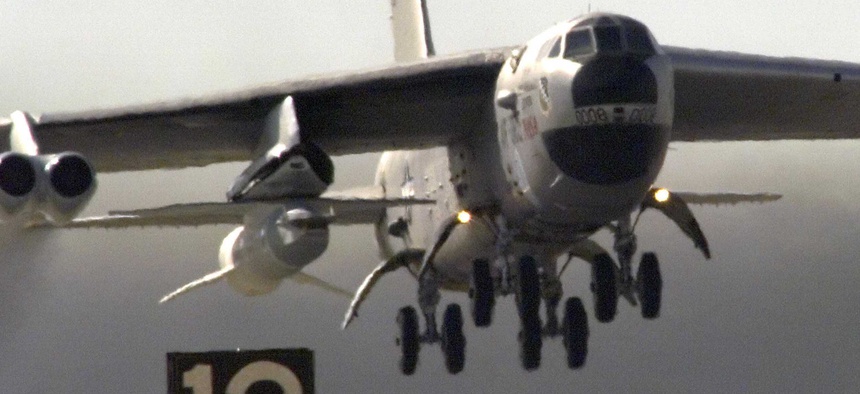BY AJ PIPLICA

A recent study that criticizes U.S. investment in hypersonic weapons misses the opportunity such technologies present for something beyond missiles: dual-use hypersonic aircraft that can solve critical national security challenges today and shrink the world of tomorrow.
The Union of Concerned Scientists report challenged the value of hypersonic weapons and sparked a public discussion on the utility of recent research and development. As Pentagon officials and others have observed, the study relied on flawed assumptions and broad arguments based on a narrowly-scoped problem definition. Like other critics, I believe it is imperative that the Defense Department continue investing in hypersonic technologies, including weapons, to remain competitive with near-peer adversaries. What’s the endgame, though? Faster missiles aren’t the only reason for investing in hypersonic technology. We should also be investing in additional research and development because of what comes after weapons: aircraft.
Speed matters. Hypersonic aircraft can fill the capability gaps of combatant commanders seeking to responsively and unpredictably gather information, share it across a networked Joint Force, and act on it faster than adversaries can react. They could prove especially useful amid the large distances and sophisticated adversaries that characterize the Indo-Pacific region.
Speed also improves decisions. Operating an OODA loop faster than the competition is key to winning, especially in uncertain, unpredictable scenarios. While hypersonic weapons enable faster action, hypersonic aircraft improve the first three elements of the loop — observe, orient, and decide — by responsively feeding actionable intelligence into a holistic operating picture. Subsonic drones do this job today, but as we move deeper into great power competition, their survivability in contested environments is limited. Near-peer competitors with sophisticated anti-access/area-denial technologies can hold today’s critical airborne platforms like RQ-4 Global Hawk drones and F-35 Joint Strike Fighters at risk. Iran, with less sophisticated defenses, has already shot down a Global Hawk. Moreover, an RQ-4 in the right place is great, but if it’s hundreds of miles away, it won’t be able to deliver at the speed of relevance. Speed, when paired with a mix of maneuverability, altitude, and countermeasures can meet this operational challenge.
Speed also provides resilience for space. The United States, Russia, China, and India all have demonstrated anti-satellite capabilities. Even with low-earth orbit constellations like Starlink, the capabilities we’ve come to take for granted might not be there when we need them, especially in contested environments. If our satellites fail, hypersonic aircraft could be their failsafe. Further, high-speed airborne platforms, with their inherent maneuverability, are less predictable than orbiting satellites.
Another reason the Defense Department is investing in hypersonic aircraft: they’re reusable. The Air Force already is looking into hypersonic and supersonic aircraft to transport government executives – including the president of the United States. DOD is currently investing in an enabling technology: high-speed airbreathing propulsion. While weapons programs like the joint DARPA/Air Force Hypersonic Air-breathing Weapon Concept, or HAWC, are leveraging that technology, other programs are focusing on multi-mission use cases, like U.S. Air Force Research Laboratory’s Mayhem, and propulsion for reusable hypersonic aircraft, like DARPA’s Advanced Full-Range Engine.
The difference-maker for these capabilities is the scale at which they can be delivered. A handful of exquisite hypersonic aircraft costing hundreds of millions of dollars each — on par with a B-2 or B-21 nuclear bomber— would be one thing. But consider the ability to deliver far greater numbers of small, autonomous hypersonic drones costing tens of millions of dollars each.
The Pentagon should continue to work with private industry on developing and producing these modern aircraft. SpaceX developed its Falcon 9 rocket for $300 million and operates it for less than $62 million per flight. NASA had expected the same effort to require $4 billion under traditional development practices and cost-type contracting, with a unit cost of $400 million. The difference: unified commercial vision, vertical integration, and a firm-fixed price acquisition strategy within the framework of a public-private partnership. Applying a similar approach with hypersonic aircraft can deliver the speed at scale that meets the Pentagon’s needs.
While the Defense Department focuses the brunt of its hypersonics resources on development of weapons and defensive systems — and rightly so, given the near-term threats they address — the commercial sector is providing the majority of investment into high-speed aircraft. Private companies like mine are racing to deliver high-speed mobility to the business and commercial aviation markets with speeds ranging from Mach 1.4 to Mach 5. At the higher end of that speed range lies a critical overlap in applications; reusable hypersonic aircraft are fundamentally a dual-use technology.
On Air Force roadmaps, reusable hypersonic systems follow hypersonic weapons, but are not slated to enter service until the 2040s. The Pentagon, with support from the Biden administration and Congress, can accelerate this roadmap by 10 to 15 years by leveraging the commercial market, turning a modest investment into an outsized positive impact on American competitiveness on the global stage.
No comments:
Post a Comment